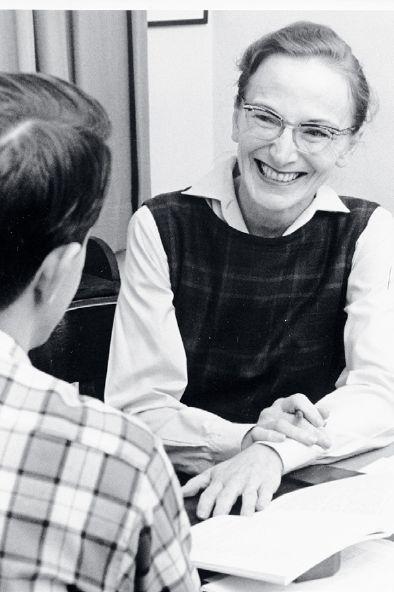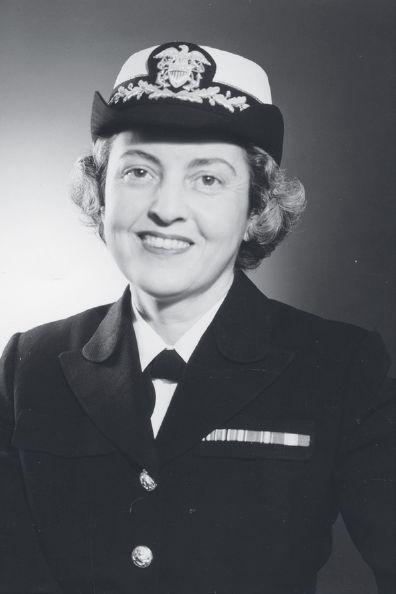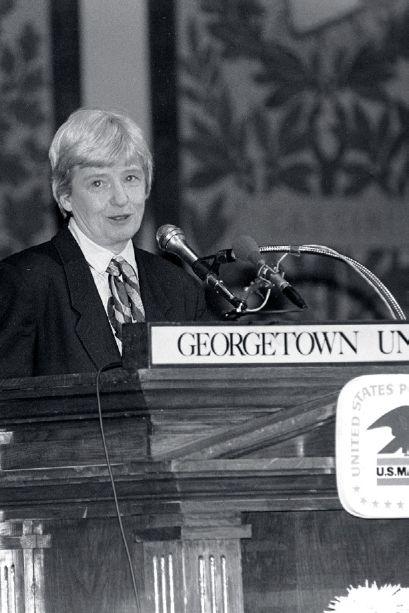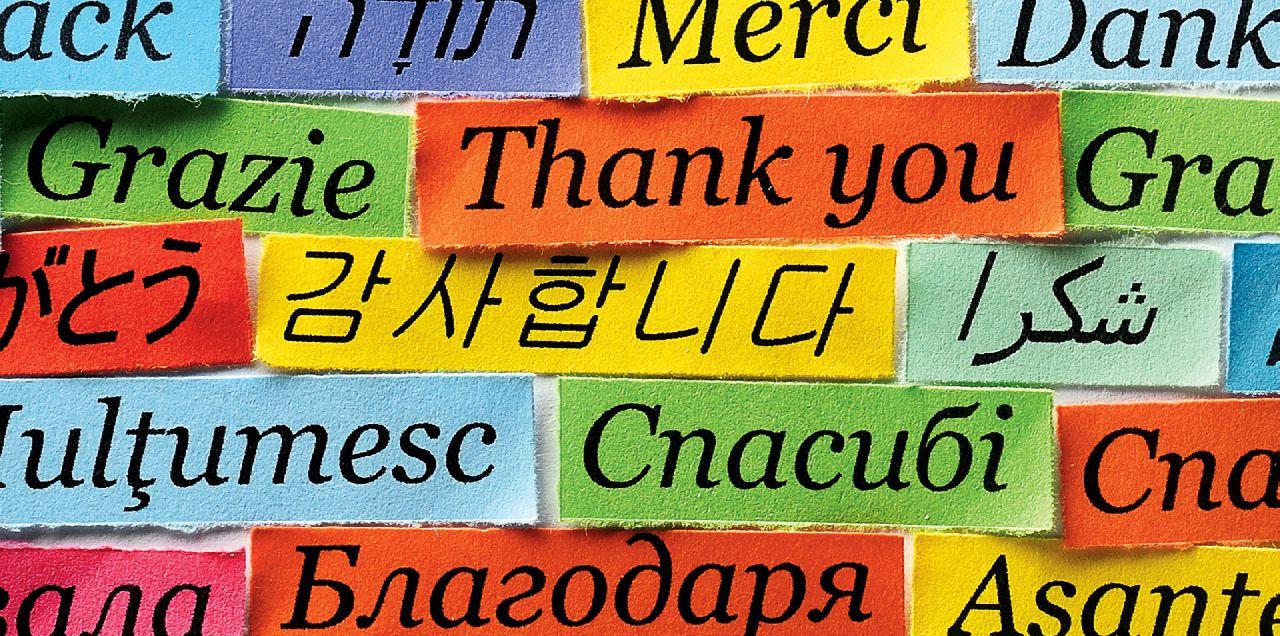
15 minute read
FROM HIEROGLYPHICS TO HANGUL
Languages and Linguistics at Georgetown
BY JEFFREY DONAHOE
Advertisement
In 1582, the Italian Jesuit Matteo Ricci arrived on a mission in China, where he began to study Chinese classical languages, characters and customs. He became one of the first Western scholars to master speaking Chinese and reading Chinese script and, with an appreciation of Confucian culture, was among the first to translate Confucian classics into Latin for Western audiences.
More than 400 years after Ricci's immersion in Chinese culture, languages are still serious subjects in Georgetown's Jesuit education.
“Jesuits were formidably good linguists,” says Josiah Osgood, professor and chair of classics and former convener of Georgetown’s Faculty of Languages and Linguistics. “The study of languages here reflects the university’s tradition in foreign service, Jesuit values and a commitment to being global—it’s very Georgetown,” Osgood says.
“Language is something that binds us, that makes us human,” says Christopher Celenza, dean of Georgetown College, home to the Faculty of Languages and Linguistics, who is also a professor of history and classics.
With a commitment to teaching and research, in recent decades Georgetown’s language departments have pioneered closer integration of language teaching and cultural immersion.
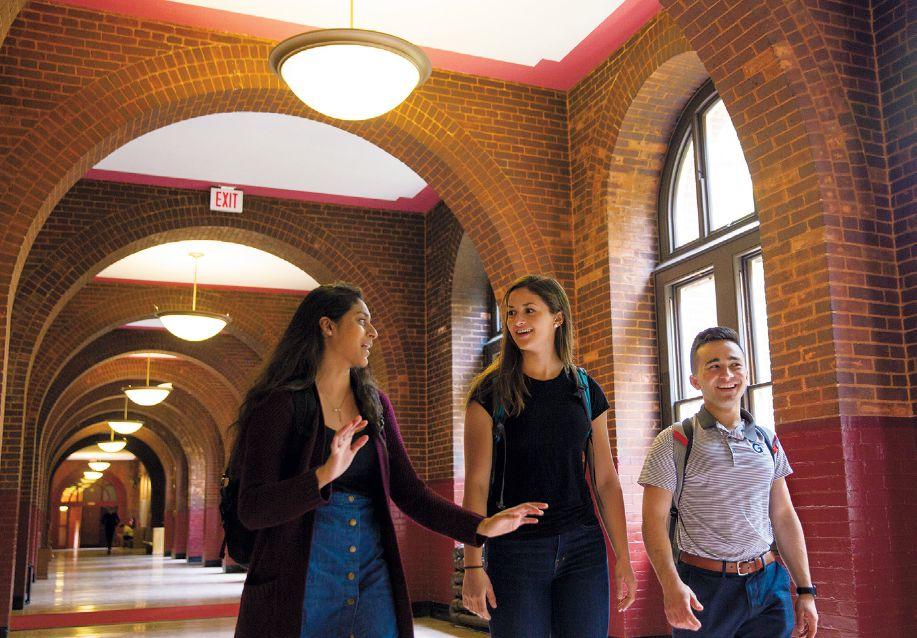
Bucking A National Trend
Today, Georgetown offers majors in 12 languages plus linguistics; course work and minors are offered in another dozen languages. Georgetown’s investment in languages goes against the grain in an era when many universities are eliminating language programs in the face of relentless cost pressures and a decline in undergraduate majors. The number of college foreign-language programs fell by 651 in just three years (2013–16), according to a 2019 report from the Modern Language Association.
While over the past 15 years or so Georgetown has seen a decline in the number of language majors, overall enrollments have been stable or increased, and the number of language minors has grown. Some departments have seen an uptick in majors.
The national trend of a decrease in language instruction raises concerns from inside and outside the academic community. The trend has an impact on diplomacy, defense and economic growth and competitiveness.
And beyond political and economic issues, what happens to the personal fulfillment and joy that knowing another language can bring?
Transformative Teaching
Languages have always been part of a Georgetown education. Georgetown founder Archbishop John Carroll’s plan for his academy included Latin and Greek—what he called “the learned languages”—plus French if there was sufficient demand. Georgetown’s first professor, a French Sulpician seminarian named Jean-Edouard de Mondesir, taught French and Latin (while learning English). The study of languages flourished at the College, drawing on the Jesuits’ academic rigor and global orientation, and the Washington, DC, location.
Unprecedented conflict in the 20th century led to the creation of a new college at Georgetown in 1919, the School of Foreign Service, founded by Rev. Edmund A. Walsh, S.J.
Walsh toured a devastated Europe in the wake of World War I. Upon his return to Georgetown, he established SFS, hoping that the formal study of diplomacy would prevent future wars. In 1949, he returned to Europe to witness a social and physical landscape laid waste by the Second World War. Walsh concluded that an essential element of his original quest to solve world problems diplomatically was an increased level of language proficiency. If diplomats were to be successful, they had to speak each other’s languages.
To make a more language-competent American society, Walsh turned to Leon Dostert (F’28, C’30, G’31). The two met at the Nuremberg war crimes trials, where Walsh was an official observer and the multilingual Dostert was chief of the trials’ language division. Dostert introduced simultaneous interpretation and translation at the trials, which Walsh recognized as a transformative tactic for improved international relations.
Walsh recruited Dostert to Georgetown, where they established the Institute of Languages and Linguistics (ILL) within SFS. The language departments, faculty and academic study were in the College, while ILL focused on practical language acquisition and mastery that was highly dependent on technology. ILL had a state-of-the-art multilingual room and language laboratory in Poulton Hall that was filled with tape recordings and soundproof booths, where students worked on their language skills by listening to auditory drills.
In 1967, the institute emerged from SFS as the School of Languages and Linguistics (SLL)—colloquially known as “Ling Lang”—with Robert Lado as founding dean. Elizabeth Zsiga, linguistics professor, department chair and the Faculty of Languages and Linguistics (FLL) convener, says that Lado was among the first scholars nationally who recognized that learning languages wasn’t just listening and repeating; it required an understanding that the structure of languages and applied linguistics went together. SLL elevated ILL’s auditory drills; students learned languages while examining their cultural contexts.
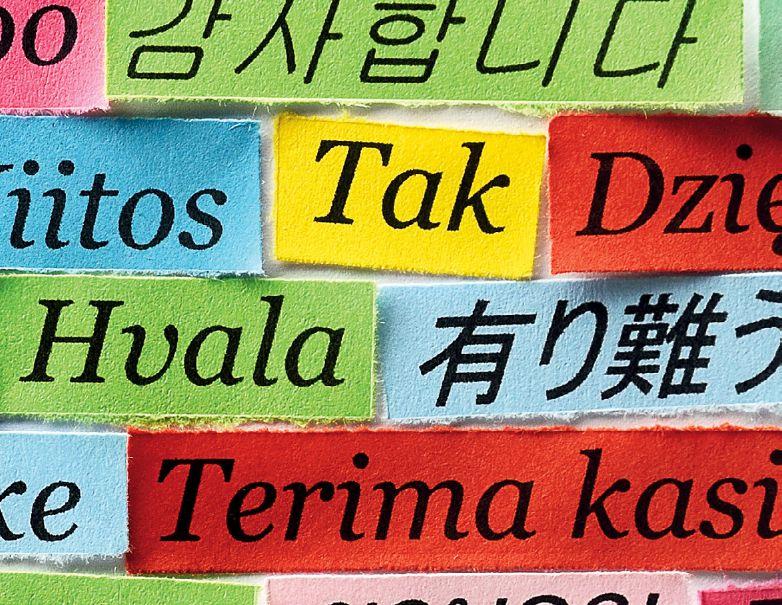
“Lado’s a big deal in the language teaching and linguistics worlds, and he’s ours,” Zsiga says.
Ancient To Modern
SLL became the Faculty of Languages and Linguistics within Georgetown College in 1995. FLL includes not only modern languages but also meets strong student interest in several classical languages—including Latin, ancient Greek and ancient Egyptian, known through hieroglyphics.
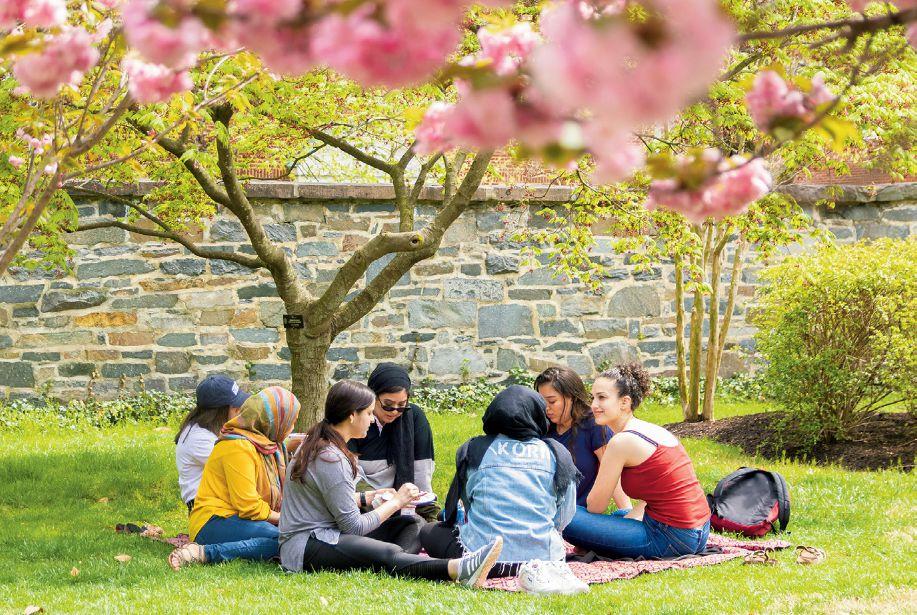
“It is extremely unusual to be teaching hieroglyphics in North America in 2019,” Osgood says. Georgetown makes it available because historical texts in ancient Egyptian, Coptic, Sanskrit and Arabic, among other languages, are still being discovered.
“We are educating students who will be able to read for themselves what people are saying, in their own words—not just read about what they said,” Zsiga adds.
Georgetown also teaches what are known as “small program” languages, often not widely taught in the U.S. Several are among those recognized by the Department of State as “critical languages” for security and economic development. They include Persian, Turkish, Hindi and Swahili. Georgetown currently ranks No. 1 in the number of students awarded prestigious Critical Language Scholarships by the State Department. See page 32
NO. 1 IN CRITICAL LANGUAGE SCHOLARSHIPS
Georgetown currently ranks No. 1 in the number of students awarded Critical Language Scholarships by the U.S. Department of State. Scholarship awardees spend eight to ten weeks overseas receiving intensive language instruction while also immersing themselves in in-country cultural experiences.
The scholarships are part of a program aimed at increasing the number of Americans studying and mastering foreign languages critical to national security and economic prosperity. Georgetown teaches nine of the 15 critical languages.
“The tremendous success in Critical Language Scholarships is in part a reflection that the students who come to Georgetown are already interested in a global society and have strong language skills,” says Lauren Tuckley, senior associate director of fellowships.
Camille Bismonte, an economics major in the College, is set to graduate in 2021 and was a Critical Language Scholar in Indonesia in 2018, one of two Georgetown students of only 28 scholars in Indonesia. She arrived in Indonesia speaking the language only at a State Department-ranked “novice low” proficiency but left “intermediate high,” which reflects about two years of academic study in eight weeks. Indonesia is also of interest as it is now the fourth-most-populated country and the largest economy in Southeast Asia.
Bismonte’s interests are in the economics of poverty. The country is making huge progress in reducing extreme poverty with policies that may be applicable elsewhere.
Bismonte transferred to Georgetown from the University of Portland. “I never would have heard of the Critical Language scholarships, let alone be awarded one there. This was an amazing and ongoing opportunity that Georgetown fully prepared me for.”
She returned for a year’s fully funded study in Indonesia this fall as a recipient of a Boren Scholarship, funded by the Department of Defense.
Contact: gufa@georgetown.edu.
A Unique Approach
To understand what integrating language and culture means, visit an advanced French class taught by Andrew Sobanet, Professor of French and Francophone Studies. Sobanet integrates culture from the first year. “We want to make it so that language isn’t just words on a page,” he says.
Sobanet teaches Modern French literature, including works by the great French poet, dramatist and novelist Victor Hugo, author of Les Misérables , The Hunchback of Notre-Dame and other works. Hugo wrote passionately about social conditions, punishment, prisoner rights and the death penalty. “Despair is surrounded by fragile walls, which all open into crime or vice,” he wrote in Les Misérables
“Hugo’s texts are a launching point for us to talk about crime and punishment,” Sobanet says—issues that matter in the world today and that are key among Georgetown’s Jesuit concern for social justice. “We look at contemporary issues and tailor them to Hugo’s texts. It’s not just reading Les Misérables —it’s connecting the work to larger issues.”
All the discussion and writing is in French, and students learn language and culture hand-in-hand.
“The students are with us in teaching this way,” Sobanet says. “It’s work, but it really adds to the intellectual quality of the class for both the professor and student.”
Another example of the department’s emphasis on culture is in part of its name: Francophone Studies—the French-speaking world wherever it is. Likewise, Department of Spanish and Portuguese faculty teach the full reach of those languages around the world, not just a limited canon of European literature.
Sobanet notes that students interested in study abroad are looking beyond Western Europe to Francophone nations. “Students are very interested in this field of study, which in the grand scheme of things is still relatively new,” Sobanet says. “It’s a way of engaging in the whole world.”
Confronting Questions
When Marcus Dominick (C’14) considered where to attend college, he knew that Georgetown was “renowned for languages and linguistics,” he says. Dominick, who majored in both German and French and Francophone Studies, is now pursuing a doctorate in French and Francophone Studies at the University of Pennsylvania and says that Georgetown’s renown is alive and well.
“As I continue my professional development, I’ve come to realize that Georgetown’s academic preparation and faculty mentoring is truly exceptional,” Dominick says. He points to the integration of language and culture in a class taught by French professor Miléna Santoro about FrenchCanadian women writers. Santoro’s approach to writers from the 1960s to 1980s anchors them not only in the literature they produced but also to the broader feminist struggle for respect and autonomy, linking the writers’ inner experiences to the outer political world.
“The abiding value of foreign language, culture and literature departments lies, for me, in their ability to confront us with other ways of naming, thinking and being in the very terms of that other culture, forcing us out of our habitual ways of relating to the world and projecting us out into a new space from which we can reassess personal and societal manners of being,” Dominick says.
“Learning a foreign language means confronting such questions as: What is society, and how do I fit within it? What are my ways of relating to others that I take for granted and assume are unchangeable? What are my society’s assumptions as to what constitutes a good life?”
Continued Innovation
FLL’s goal is to bring students to language proficiency, including in Russian, Chinese, Korean, Japanese, Arabic, Persian and Swahili—languages that are particularly challenging for English speakers to learn.
Farima Mostowfi, who created and heads the Persian program, began teaching the first Persian classes at Georgetown in 2006 and has steadily built the program, which now teaches nearly 50 students, with six minoring in Persian.
“Our proficiency goal is as close to native as possible,” she says. “We really want our graduates to be able to communicate in the language.”
Because U.S. students are restricted from travel to Iran, study abroad or immersive language experiences are impossible, making it “even more important to bring language, culture, film, history and poetry into the classroom,” Mostowfi says. Mostowfi also organizes informal events that give students, faculty and the community an opportunity to speak with each other and to share music, poetry and food.
Mostowfi is using contemporary teaching technology to advance students’ education in Persian. Partnering with Peter Janssens of CNDLS—the Center for New Designs
In addition to linguistics* and comparative literature,* Georgetown teaches:
● Arabic*
● Basque
● Catalan
● Chinese*
● Classics* (concentrations in Latin, Greek, Latin and Greek and Classical Studies)
● Ancient Egyptian
● French and Francophone Studies*
● German*
● Modern Greek
● Hebrew
● Italian*
* = Major
● Japanese*
● Korean
● Persian
● Polish
● Portuguese*
● Russian*
● Sanskrit
● Spanish*
● Swahili
● Thai
● Turkish
● Ukrainian in Learning and Scholarship at Georgetown—she also is teaching a “hybrid” class format that brings together students at Georgetown and elsewhere in the U.S. simultaneously. In contrast to recorded content online, the real-time class “gives the same interaction with all the students, whether they are in the room or remote.”
Global Citizens
The study of language is central to Georgetown’s global position and perspective and its mission to educate students to tackle global issues and be part of a global society.
“Language is intimately intertwined with the question: What does it mean to be a global citizen?” says College Dean Christopher Celenza. “The ability to take in and process information, to understand people—language is baked into that.”
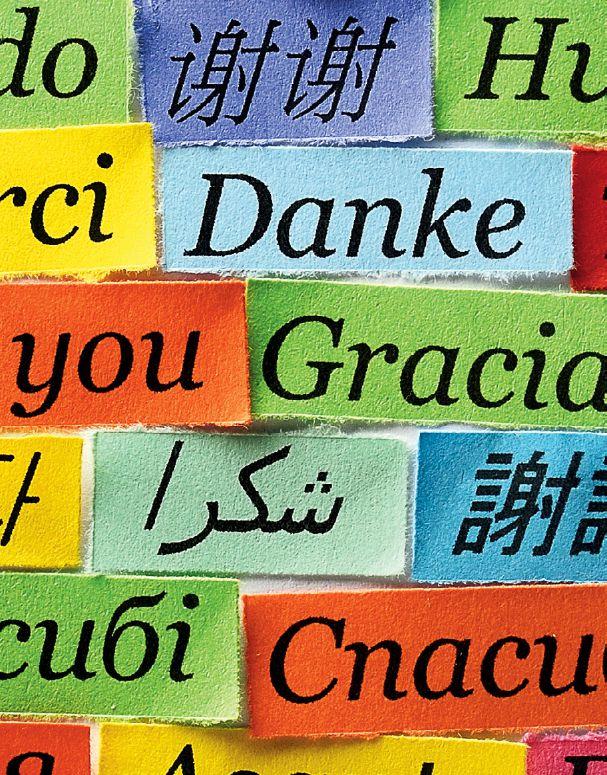
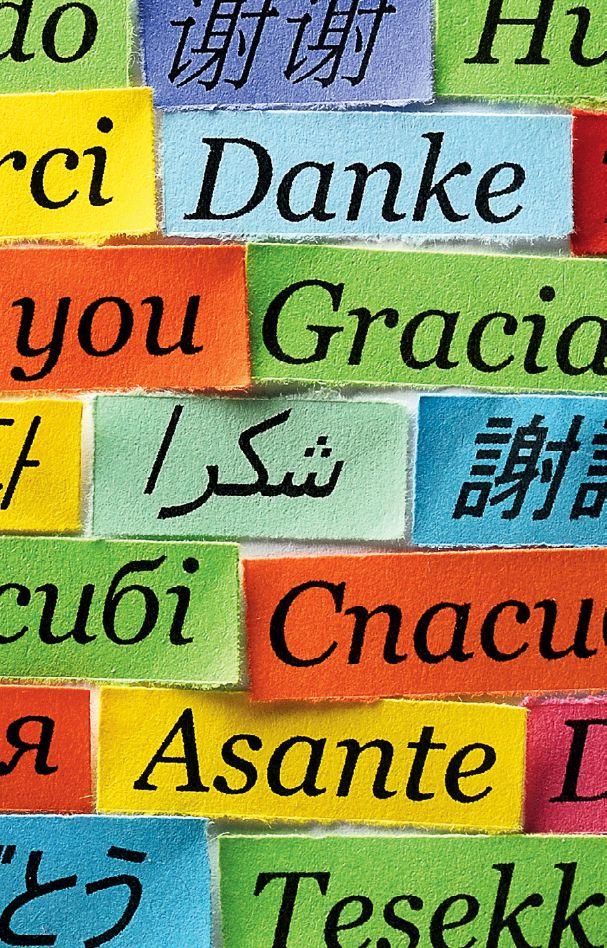
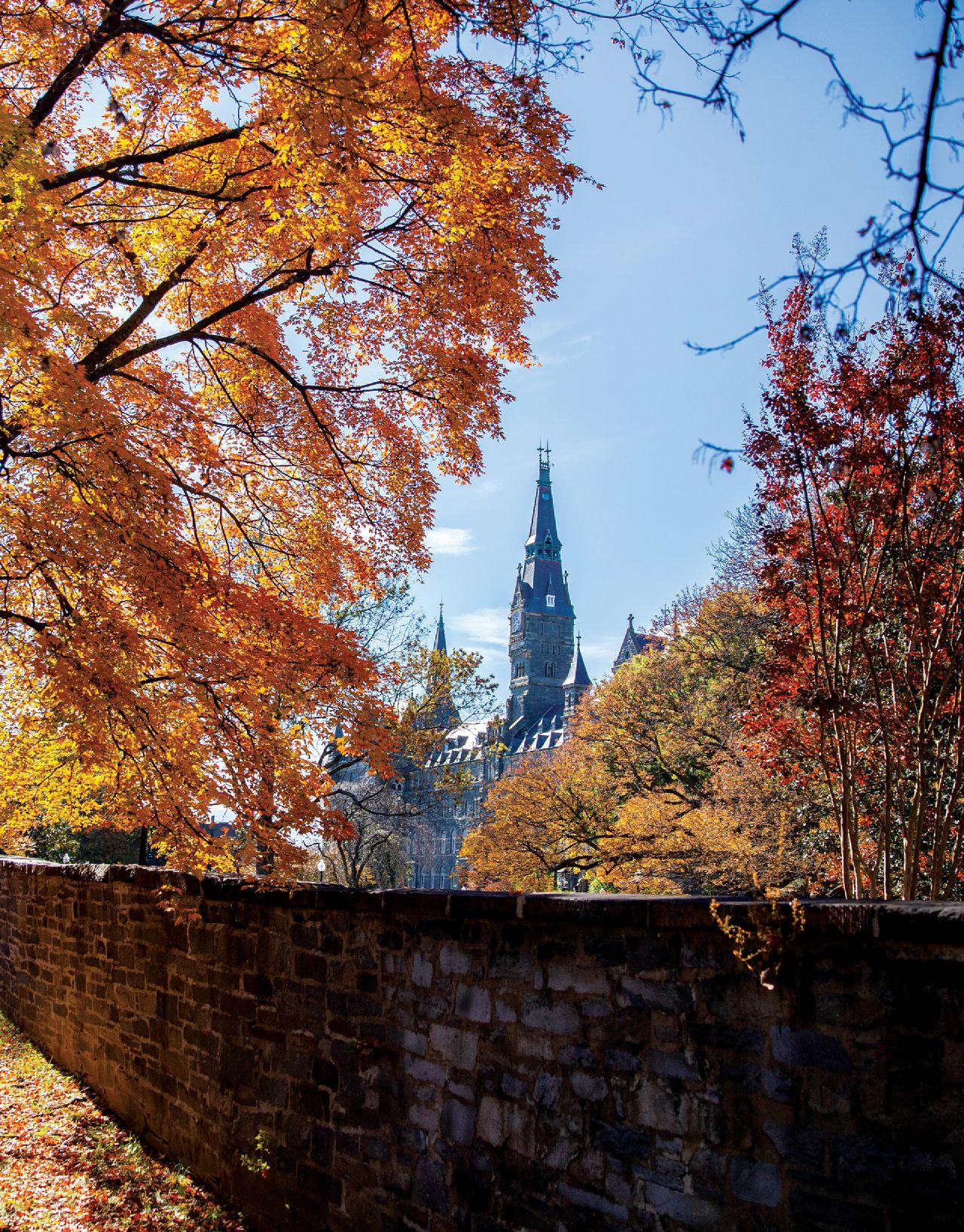
Dear Alumni:
In May, we had another highly successful John Carroll Weekend, this year hosted by Boston. It was a wonderful four days with more than 1,300 alumni and friends attending and being inspired by our John Carroll and Patrick Healy awardees.
At the awards banquet, I shared some thoughts as President of the Alumni Association. Boston had last hosted the John Carroll Weekend in 1994, and that anniversary was an opportunity for me to reflect about how the Alumni Association has changed in 25 years and where we are today. I’d like to share some of those thoughts with you now.
The Alumni Association has made a deep commitment to enhancing our global nature, and to supporting diversity and inclusion. This honors where Georgetown already is today—a global university with programs around the world. Alumni living in more than 120 countries reflect this global nature.
When the John Carroll Weekend was in Boston in 1994, the event had been outside the United States only once, in London. Since then, we have gathered abroad four times. Starting in 2013, we’ve also hosted International Alumni Weekends in Doha, Hong Kong and Mexico City.
The Association’s ongoing commitment to inclusion is reflected in many areas, including our leadership. Looking back to 1994, no woman had ever been president of the Alumni Association. Since then, four women have served in that role. And with the appointment last year of Julia Farr (C’88), we welcomed the first woman to serve as Executive Director of the Association.
We’ve created programs targeted to alumnae, including the Women of Georgetown initiative, which launched in 2017 to connect the 83,000-plus alumnae with each other and with the university. We are also now co-sponsors of the universitywide Women’s Forum, which was started at the Law Center in the early 1990s.
Our major events—Homecoming, John Carroll Weekend and Reunion—feature programming that provides a special welcome for alumni of color, our LGBT Hoyas and others. The Alumni Association is for everyone, and our leadership is committed to ensuring diversity and inclusion.
In addition to a robust regional club presence around the world, we are growing networks and alliances based on professional interests. To borrow the words of our executive director Julia Farr, we now link alumni not only by location, but also by vocation. These alliances are bringing together experienced leaders to start-up entrepreneurs to share advice and ideas. They are a great example of the association’s commitment to lifelong learning and connection.
As an Alumni Association, we value change and innovation while honoring the human connection at the heart of our relationships with each other and with the university. I encourage you to stay connected with your fellow alumni through the programs I’ve mentioned and more.
Hoya Saxa!
Richard M. Hluchan (F’71) President, Georgetown University Alumni Association
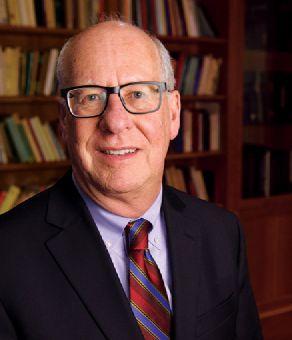
More than a Rivalry
When football Coach Lou Little arrived on the Hilltop in 1924, the program became a campus obsession. Students flocked to see Little’s team dominate the competition. Over the course of his six seasons as coach, Little boasted an impressive 41-12-3 record while also serving as the university’s athletics director. His players at Georgetown included three All-Americans, each of whom went on to be inducted into the Georgetown Athletic Hall of Fame.
Upon leaving Georgetown, Little coached at Columbia University from 1930 to 1956. He was elected president of the American Football Coaches Association (AFCA) and served on the college football Rules Committee. His successes earned him induction into the College Football Foundation Hall of Fame in 1960.
Thanks to a new tradition, Little is inspiring Georgetown’s football team once again, nearly a century after he coached on the Hilltop. Columbia and Georgetown are sponsoring a 10-year series honoring Little’s legendary career. The teams battle for possession of the Lou Little Trophy, which remains on the winning team’s campus for the following year. The series is in its fifth year.
As a student athlete at Georgetown in the 1990s, current Head Coach Rob Sgarlata (C’94, G’12) was taught that he stood on the shoulders of those who came before him. Noting that football has been part of the fabric of Georgetown since the late 19th century, Sgarlata believes the Lou Little Trophy series is a meaningful way to understand the rich history of the program, adding that memorializing Little with a special rivalry game against Columbia honors “what he meant to both schools and helps us to continue that legacy.”
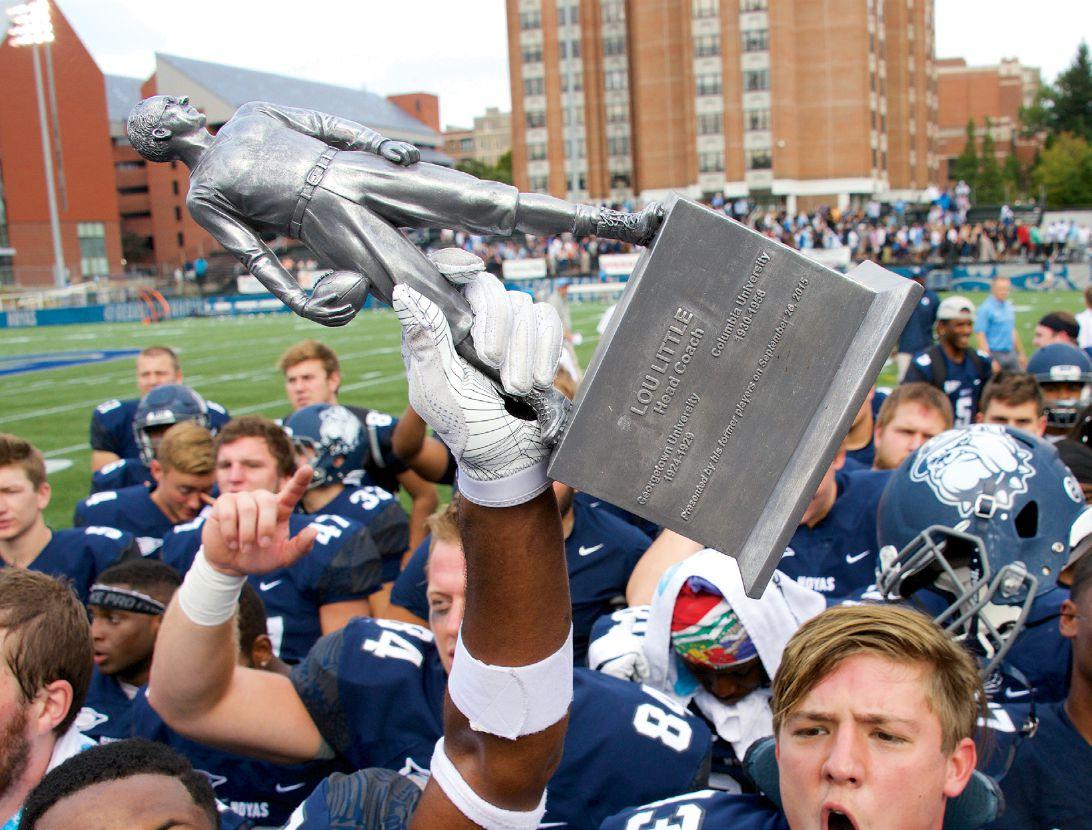
Black Theater Ensemble Tells Stories for Forty Years
While Soyica Colbert (C’01) was not a Black Theater Ensemble member, she was familiar with it through friends who were members. “One of the exciting things about this co-curricular group is that there is now a Department of Performing Arts, which didn’t exist when I was a student.”
Colbert is chair of the Department of Performing Arts, director of Theater and Performance Studies, and professor of African American Studies and Theater and Performance Studies.
“BTE creates a structure that supplements already-existing groups like them, and they ’re able to work together so that there ’s a broader base for mentorship, to support student work and allow what's happening outside of the classroom to merge with the learning that takes place in the classroom.”
Founded in 1979, the Black Theater Ensemble produces the works of Black artists, expands discourse related to the experi- ence of the Black community and amplifies traditionally underrepresented voices. Students also share song, dance and poetry through coffee-house-style performances.
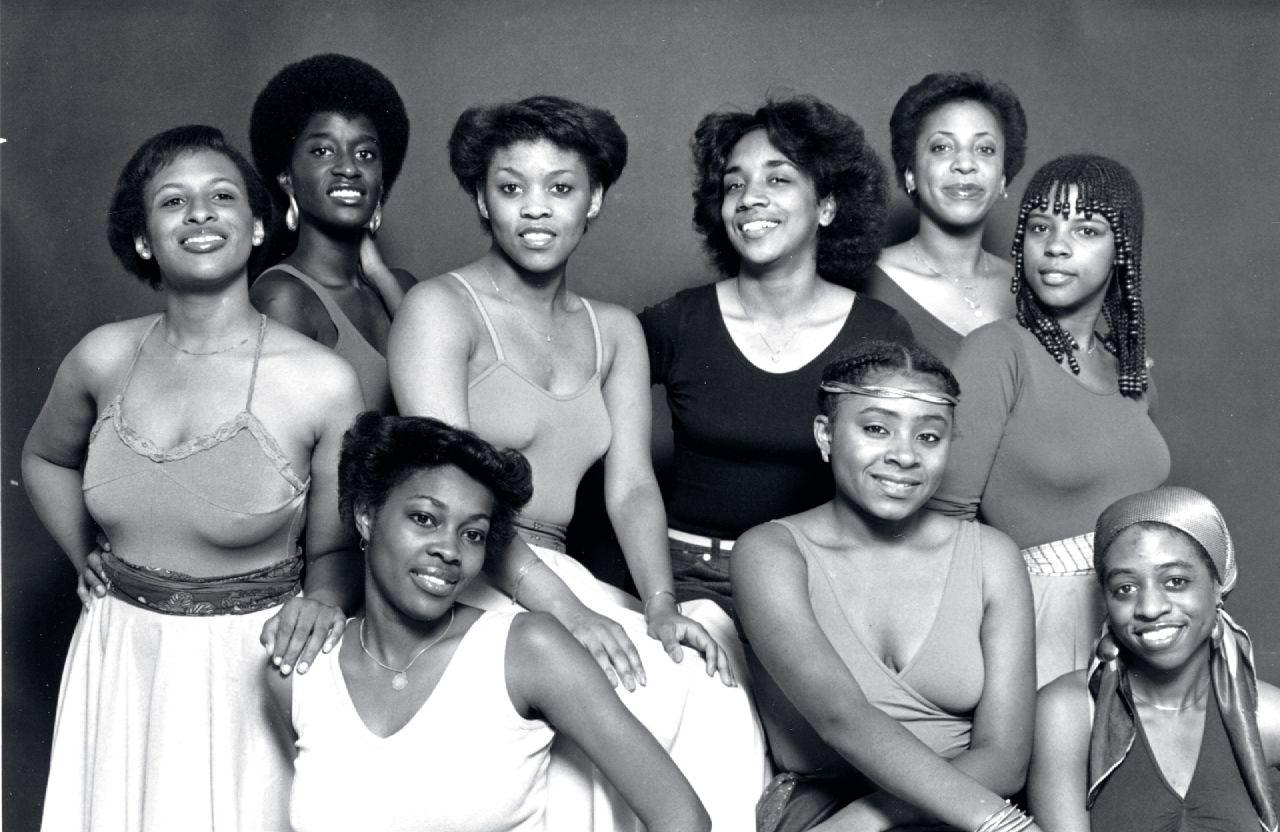
Fatima Dyfan (C’21), who has been a BTE actor, director and producer, says the work is important because “the depiction of Black people in the canon, the act of portraying Blackness, is perpetuated by tropes of what it is to be Black.”
BTE’s performances encompasses a broad range of works that “gives the opportunity to not only highlight the works of canonical figures like August Wilson, Lynn Nottage, Suzan Lori Parks, but also an opportunity for students’ own voices to emerge,” Colbert says.
In January 2020, BTE will present The Wolves by Sarah DeLappe in collaboration with Nomadic Theatre, another Georgetown co-curricular student-theater group. For information, go to performingarts.georgetown.edu
Women on the Wall: Honoring an Underappreciated Legacy
The walls of Georgetown’s Leavey Center now tell a wonderful visual story of some of the university’s most inspiring alumnae and female faculty, staff and administrators, thanks to the Women on the Wall project.
The initiative that celebrates and memorializes women on the Hilltop was spearheaded by C.C. Borzilleri (C’19) and the Georgetown Women Alliance. Borzilleri, who served as the organization’s senior fellow, said she was inspired to increase the visibility of influential women at Georgetown after learning about their contributions.
“In many ways, women have largely been left out of Georgetown’s history and the stories that we tell,” Borzilleri says. “This exhibit is really an effort for anyone who walks by to be impressed by these women, and to see women who have made tremendous strides in dynamic fields.”
The exhibit debuted in Hoya Court at the Leavey Center in March 2019. Borzilleri said she is pleased to know that, as it stands, the exhibit will be a mainstay on campus, where the Georgetown community can be reminded of the contributions and stories of women on the Hilltop.
One of the celebrated alumnae is Artrice Valentine Bader (G’66), the first woman at Georgetown to receive a doctorate in biology.
“It’s a great honor to receive from the university,” Bader says. “C.C.’s two-year effort into this project turned out incredibly. As a woman of color in the field of science, I am happy to be a role model and hope more young people enter the sciences.”
Bader says that she was delighted to learn about the exhibit and was filled with emotion upon seeing her image and accomplishments on the wall.
“To be on the wall of the Leavey Center is wonderful. It’s quite a legacy for me to leave for my grandchildren. It’s certainly made my year.” director of the program, including executive vice president for student development. graduate from the School of Medicine, researched viral links to cancer at the National Institutes of Health. discovering the Polyomavirus in 1953.
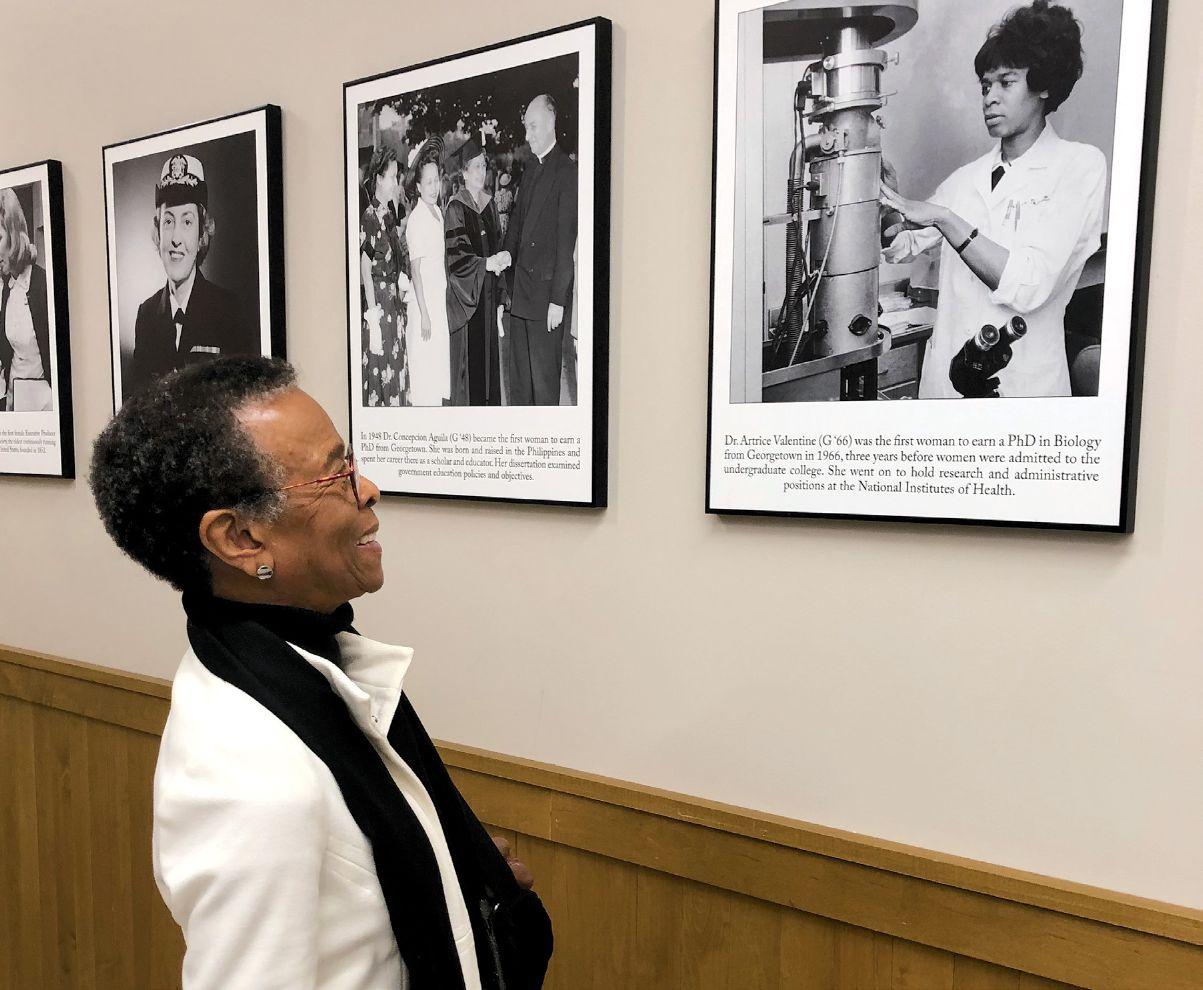
4.
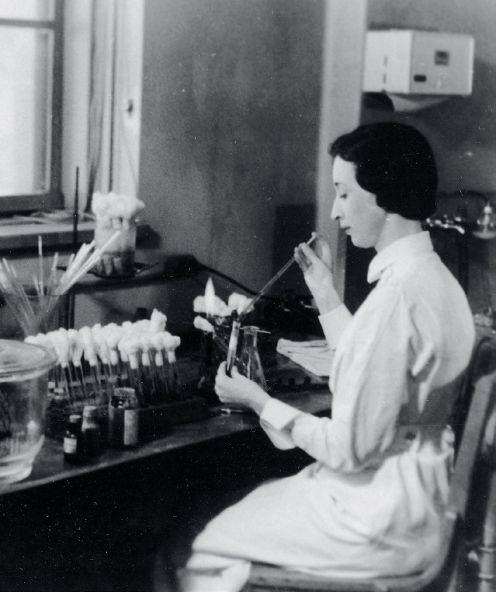
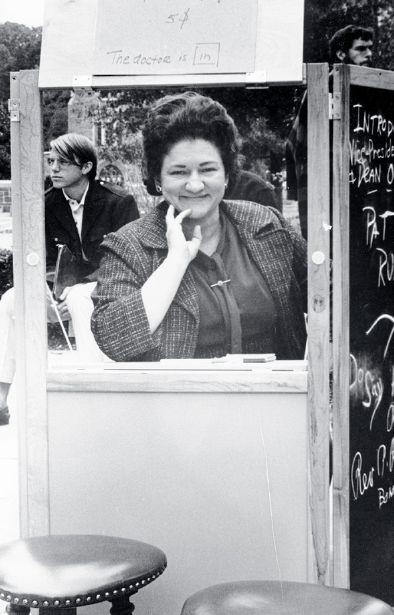
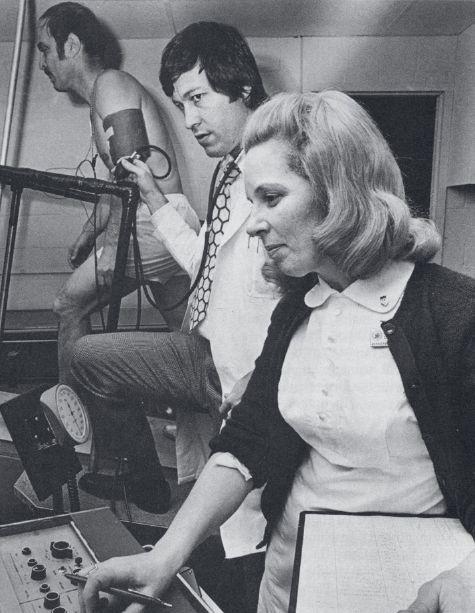
Rita Lenihan, USN (MSFS’45, G’54) directed the WAVES (Women Accepted for Volunteer Emergency Service) for four years. She was also assistant chief of naval personnel. 6. Professor of Government Valerie Earle joined Georgetown in 1955 as the first female faculty member in what was then called the business program. Earle helped found and served as the first president the Faculty Senate. In 1972, she became chair of the Department of Government. | Photos: Georgetown University Special Collections
